#paul carus
Explore tagged Tumblr posts
Text


The history of the devil and the idea of evil : from the earliest times to the present day, Paul Carus
#quote#quotes#the devil#paul carus#the history of the devil and the idea of evil#book#devil#demonology#archive.org
7 notes
·
View notes
Text

Chapter 11
Tao Te Ching (Dao De Jing) by Lao Tzu
Thirty spokes unite in one nave and on that which is non-existent on the hole in the nave depends the wheel's utility.
Clay is molded into a vessel and on that which is non-existent on its hollowness depends the vessel's utility.
By cutting out doors and windows we build a house and on that which is non-existent on the empty space within depends the house's utility.
Therefore, existence renders actual but non-existence renders useful."
- Translated by D. T. Suzuki and Paul Carus, 1913, Chapter 11
IMMATERIALITY
- Alan Watts
A wheel may have thirty spokes, but its usefulness lies in the empty hub.
A jar is formed from clay, but its usefulness lies in the empty center.
A room is made from four walls, but its usefulness lies in the space between.
Matter is necessary to give form, but the value of reality lies in its immateriality.
Everything that lives has a physical body, but the value of a life is measured by the soul.
37 notes
·
View notes
Note
Is the Satanic Bible by Lavey worth reading? Are there any books on Satanism that you'd recommend at all?
It's been a LONG time since I read the Satanic Bible. I remember there being some good bits, and it remains on my shelf untouched for the last decade or so. Take everything in it with a grain of salt, I guess, as reading it is kind of a rite of passage for Satanists of all stripes.
Here's a list of some of the other books on my shelf. I've either gotten some good information from them or they've inspired some of my own theology, but that doesn't mean they're not all problematic in places.
"The Devil's Dozen" by Gemma Gary
"The Devil's Death" by Shiva Honey
"The History of the Devil" by Paul Carus
"The Origin of Satan" by Elaine Pagels
"At Satan's Altar" by Marie Ravensoul
"The Book of Infernal Prayer" from the Brotherhood of the Morningstar
"Satanism and Devil Worship" by Aleister Nacht
"The Bible of the Adversary" by Michael W Ford
18 notes
·
View notes
Text
La Morte

The sick child, 1896 | Edvard Munch (1863-1944, Norway)

Funerale bianco (White funeral), 1901 | Edoardo Berta (1867-1931, Italia)

Autoritratto macabro (macabre self-portrait), 1899 | Carlo Fornara (1871-1968, Italia)

Tombe romane (roman tombs), Concordia (Venice), 1887 | Filippo Franzoni (1857-1911, Switzerland)

Miseria, 1886 | Cristóbal Rojas (1857-1890, Venezuela)

Böcklin's grave, 1901-02 (Staatliche Kunsthalle, Karlsruhe) | Ferdinand Keller (1876-1958, Germany)
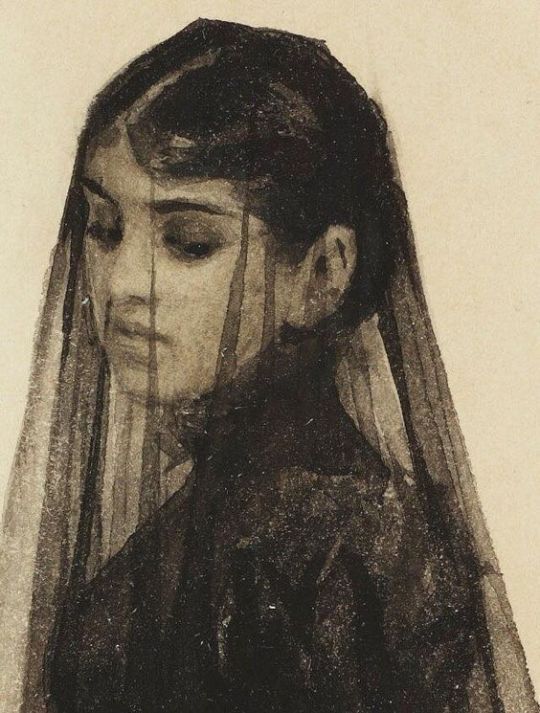
The widow (detail), 1882-83 | Anders Zorn (1860-1920, Sweden)

L’adultera o La femme de Claude, 1877 (Galleria d’Arte Moderna, Torino) | Francesco Mosso (1848-1877, Italia)

The funeral of Shelley, 1889 | Louis Édouard Fournier (1857-1917, France)

La peine de mort | Félicien Rops (1833-1898, Belgium)

Funeral at sea (on the death of the painter David Wilkie), 1842 (Tate Gallery, London) | William Turner (1775-1851, England)

La mort de Marat, 1793 (Musées royaux des Beaux-Arts, Bruxelles) | Jacques-Louis David (1748-1825, France)
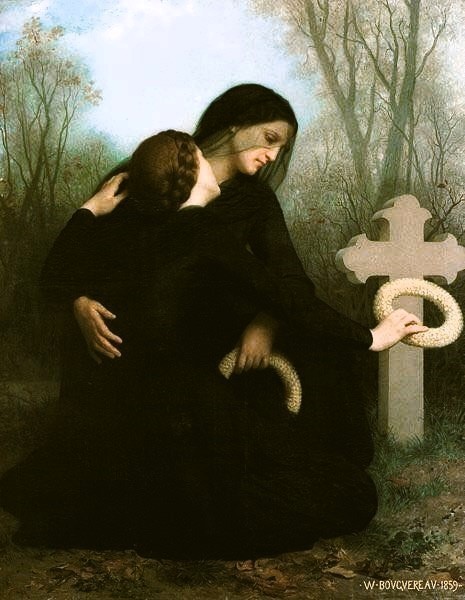
Le jour des morts, 1859 (Musée des Beaux-Arts, Bordeaux) | William Adolphe Bouguereau (1825-1905, France)

Bradamante at Merlin's tomb, 1820 | Alexandre-Évariste Fragonard (1780-1850, France)

Death on the pale horse, 1865 | Gustave Doré (1832-1883, France)

Il trionfo della morte, 1464 ca. (Palazzo Abatellis, Palermo) | Anonimo

Roman widow | Dante Gabriel Rossetti (1828-1882, England)

Cemetery in the moonlight, 1822 | Carl Gustav Carus (1789-1869, Germany)
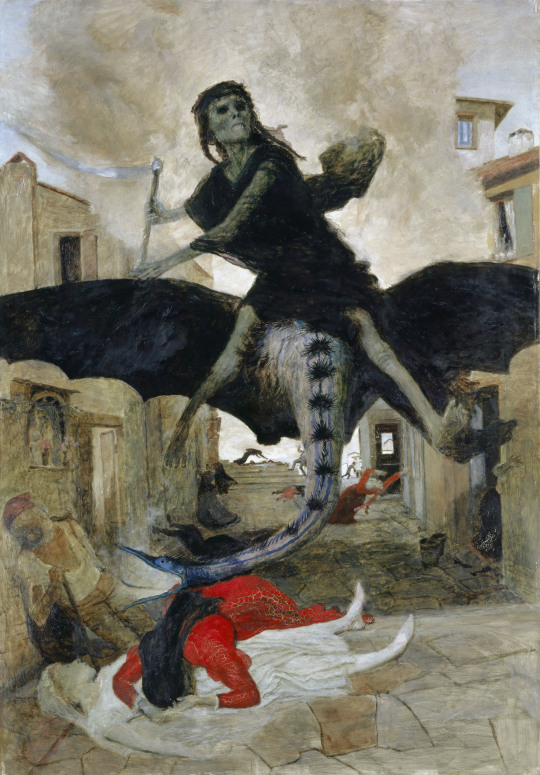
The plague, 1898 | Arnold Böcklin (1827-1901, Switzerland)
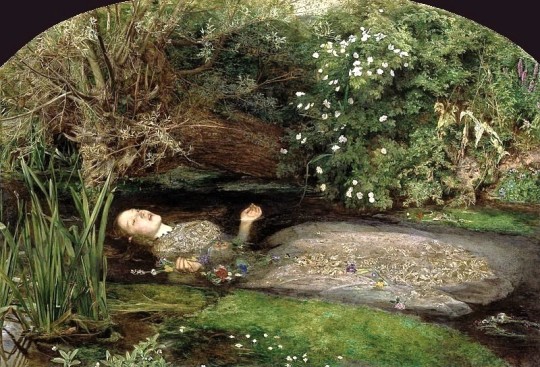
Ophelia, 1851-52 (Tate Britain, London) | John Everett Millais (1829-1996, England)
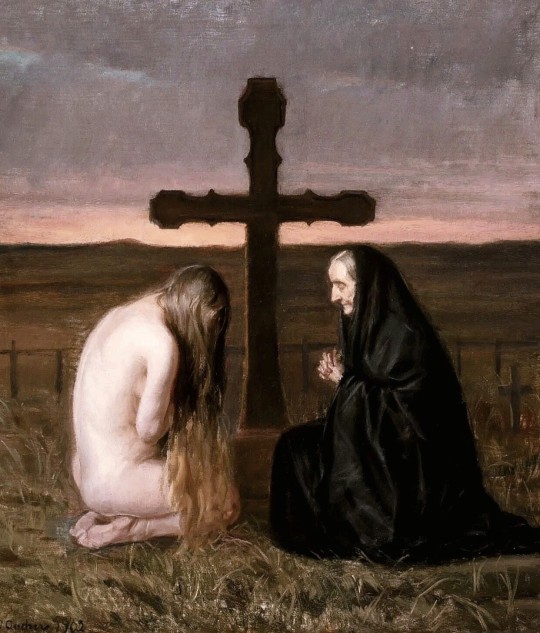
Grief, 1902 | Anna Ancher (1859-1935, Denmark)

The plague of pestilence, portfolio (two of seven etchings), 1920 | Stefan Eggeler (1894-1969, Austria)
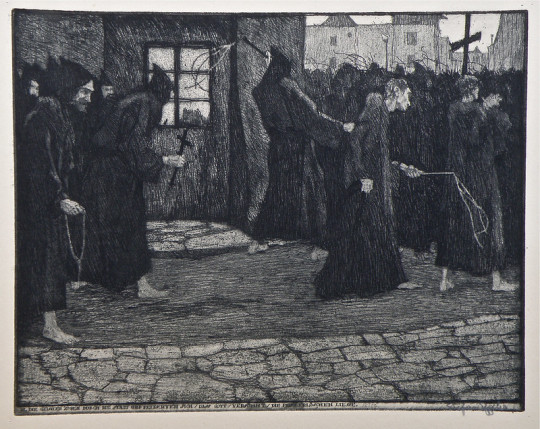
The plague of pestilence, portfolio (three of seven etchings), 1920 | Stefan Eggeler (1894-1969, Austria)

Dr. Nicolaes Tulp's anatomy lesson, 1632 | Rembrandt (1606-1669, Netherlands)

La sepoltura del conte di Orgaz (El Entierro del conde de Orgaz), 1586 (Chiesa di Santo Tomé, Toledo) | El Greco (1541-1614, Greece)

Woman on her deathbed, 1883 (Kröller-Müller Museum, Otterlo) | Vincent van Gogh (1853-1890, Netherlands)

Princess Tarakanova, in the Peter and Paul Fortress at the time of the flood, 1864 | Konstantin Flavitsky (1830-1866, Russia)
6 notes
·
View notes
Text

Special screening of the fantastic "Orlando, My Political Biography" by Paul B. Preciado, after it's success in Berlin and San Sebastian. Caru Basakatua, screenwriter at NineColors and programmer at LesGaiCineMad, will present the film with artist Rocío Saiz. After the film they will converse about this free adaptation of the Virginia Woolf novel. Cines Embajadores, Wednesday October 11th at 20:00h 🏳️🌈🏳️⚧️🏴☠️ Pase especial de la fantástica "Orlando, Mi Biografía Política" de Paul B. Preciado, tras su éxito en Berlín y San Sebastián. Caru Basakatua, guionista en NineColors y programadore de LesGaiCineMad, presentará el film con la artista Rocío Saiz. Después tendrán un interesante coloquio sobre esta libre adaptación de la obra de Virginia Wolf. Cines Embajadores, miércoles 11 de octubre a las 20:00h
#Orlando#Orlando Mi Biografía Política#Paul B Preciado#Rocío Saíz#LesGaiCineMad#building queerer worlds#ninecolors
0 notes
Photo

Paul Carus "THE HISTORY OF THE DEVIL AND THE IDEA OF EVIL"
31 notes
·
View notes
Text



The history of the devil and the idea of evil : from the earliest times to the present day, Paul Carus
#quote#quotes#serpent#snake#snake symbolism#serpent symbolism#paul carus#the history of the devil and the idea of evil#archive.org#book
5 notes
·
View notes
Photo

Image from page 61 of "The Open court" (1887) Carus, Paul, 1852-1919
6 notes
·
View notes
Text

KARMA: A STORY OF EARLY BUDDHISM by Paul Carus. (Chicago: Open Court Publishing, 1894). Illustrated by T. Hasegawa.


#beautiful books#books books books#book blog#book cover#books#illustrated book#victorian era#buddhism
21 notes
·
View notes
Text
The Basics of Kemetic Philosophy (without the appropriated shit from Judaism)
I'm starting a series on Kemetic philosophy because a lot of my readings on it have included things like Kabbalah (Kabala, Kabbala, Qabala, etc.) which is directly appropriated from Judaism, and definitely would not have been included in ancient Kemetic philosophy.
This series relies heavily on the following books/independent publications (this continues to be updated as the series continues):
The Instruction of Ptah-Hotep and the Instruction of Ka'Gemni: The Oldest Books in the World translated by John Murray
Teachings of Ptahhotep
Maat: The 11 Laws of God by Ra Un Nefer Amen (somewhat, this book literally has the Kabbalistic tree of life on its' cover so I don't take a lot from it--it's really just a good jumping-off point because it covers so much)
Maat: The Moral Idea in Ancient Egypt by Maulana Karenga
The Literature of Ancient Egypt: An Anthology of Stories, Instructions, and Poetry edited with an introduction by William Kelly Simpson. Authors include Robert K. Ritner, Vincent A. Tobin, and Edward F. Wente.
I Am Because We Are: Readings in Africana Philosophy by Fred Lee Hord, Mzee Lasana Okpara, and Johnathan Scott Lee.
Ancient Egyptian Literature: Volume I: The Old and Middle Kingdoms by Miriam Lichtheim (2006 Edition)
Current Research in Egyptology 2009: Proceedings of the Tenth Annual Symposium by Judith Corbelli, Daniel Baotright, and Claire Malleson
Old Kingdom, New Perspectives: Egyptian Art and Archaeology 2750-2150 BC by Nigel Strudwick and Helen Strudwick
Current Research in Egyptology 2010: Proceedings of the Eleventh Annual Symposium by Maarten Horn, Joost Kramer, Daniel Soliman, Nico Staring, Carina van den Hoven, and Lara Weiss
Current Research in Egyptology 2016: Proceedings of the Seventeenth Annual Symposium by Julia M. Chyla, Joanna Dêbowska-Ludwin, Karolina Rosińska-Balik, and Carl Walsh
Mathematics in Ancient Egypt: A Contextual History by Annette Imhausen
The Instruction of Amenemope: A Critical Edition and Commentary by James Roger Black
"The ancient Egyptian concept of Maat: Reflections on social justice and natural order" by R. James Ferguson
The Mind of Ancient Egypt: History and Meaning in the Time of the Pharaohs by Jan Assmann
Transformations of the Inner Self in Ancient Religions by Jan Assmann and Guy G. Stroumsa
Of God and Gods: Egypt, Israel, and the Rise of Monotheism by Jan Assmann
Death and Salvation in Ancient Egypt by Jan Assmann
Cultural Memory and Early Civilization: Writing, Remembrance, and Political Imagination by Jan Assmann
From Akhenaten to Moses: Ancient Egypt and Religious Change by Jan Assmann
Book of the Dead: Becoming God in Ancient Egypt edited by Foy Scalf with new object photography by Kevin Bryce Lowry
It also relies on the following journal articles/book chapters:
"A Modern Look at Ancient Wisdom: The Instruction of Ptahhotep Revisited" by Carole R. Fontaine in The Biblical Archaeologist Volume 44, No. 3
"The Teaching of Ptahhotep: The London Versions" by Alice Heyne in Current Research in Egyptology 2006: Proceedings of the Seventh Annual Symposium
"One Among Many: A Divine Call for Gender Equity" by Sandra Y Lewis in Phylon (1960-) Volume 55, No. 1 & 2.
"A Tale of Semantics and Suppressions: Reinterpreting Papyrus Mayer A and the So-called War of the High Priest during the Reign of Ramesses XI" by Kim Ridealgh in Studien zur Altägyptischen Kultur
EDITORIAL: African Philosophy as a radical critique" by Alena Rettová in Journal of African Cultural Studies Volume 28, No. 2
"Sanctuary Meret and the Royal Cult" by Miroslav Verner in Symposium zur Königsideologie / 7th Symposium on Egyptian Royal Ideology: Royal versus Divine Authority: Acquisition, Legitimization and Renewal of Power. Prague, June 26–28, 2013
"The Ogdoad and Divine Kingship in Dendara" by Filip Coppens and Jiří Janák in Symposium zur Königsideologie / 7th Symposium on Egyptian Royal Ideology: Royal versus Divine Authority: Acquisition, Legitimization and Renewal of Power. Prague, June 26–28, 2013
"The Egyptian Temple as a Place to House Collections (from the Old Kingdom to the Late Period) by Roberto A. Diaz Hernández in The Journal of Egyptian Archaeology Volume 103, No. 1
"Death and the Sun Temple: New Evidence for Private Mortuary Cults at Amarna" by Jacquelyn Williamson in The Journal of Egyptian Archaeology Volume 103, No. 1
"Mery-Maat, An Eighteenth Dynasty iry '3 pr pth From Memphis and His Hypothetical Family" by Rasha Metawi in The Journal of Egyptian Archaeology Volume 101, 2015
"A New Demotic Translation of (Excerpts of) A Chapter of The "Book of the Dead" by Joachim Friedrich Quack in The Journal of Egyptian Archaeology Volume 100, 2014
"The Shedshed of Wepwawet: An Artistic and Behavioural Interpretation" by Linda Evans in The Journal of Egyptian Archaeology Volume 97, 2011
"(De)queering Hatshepsut: Binary Bind in Archaeology of Egypt and Kingship Beyond the Corporeal" by Uroš Matić in Journal of Archaeological Method and Theory Volume 23, No. 3 "Binary Binds": Deconstructing and Gender Dichotomies in Archeological Practice.
"Egyptian Maat and Hesiodic Metis" by Christopher A. Faraone and Emily Teeter in Mnemosyne Volume 57 Fasc. 2
"Maat and Order in African Cosmology: A Conceptual Tool for Understanding Indigenous Knowledge" by Denise Martin in Journal of Black Studies Volume 38, No. 6
"Memphis and Thebes: Disaster and Renewal in Ancient Egyptian Consciousness" by Ogden Goelet in The Classical World Volume 97, No. 1
"A Radical Reconstruction of Resistance Strategies: Black Girls and Black Women Reclaiming Our Power Using Transdisciplinary Applied Social Justice, Ma'at, and Rites of Passage" by Menah Pratt-Clarke in Journal of African American Studies Volume 17, No. 1
"Emblems for the Afterlife" by Marley Brown in Archaeology Volume 71, No. 3
"Human and Divine: The King's Two Bodies and The Royal Paradigm in Fifth Dynasty Egypt" by Massimiliano Nuzzolo in Symposium zur ägyptischen Königsideologie/8th Symposium on Egyptian Royal Ideology: Constructing Authority. Prestige, Reputation and the Perception of Power in Egyptian Kingship. Budapest, May 12-14, 2016
"The Block and Its Decoration" by Josef Wegner in The Sun-shade Chapel of Meritaten from the House-of-Waenre of Akhenaten
"The African Rites of Passage and the Black Fraternity" by Ali D. Chambers in Journal of Black Studies Volume 47, No. 4
"Review: Translating Ma'at" by Stephen Quirke in The Journal of Egyptian Archaeology Volume 80, 1994
"Additions to the Egyptian Book of the Dead" by T. George Allen in Journal of Near Eastern Studies Volume 11, No. 3
"Types of Rubrics in the Egyptian Book of the Dead" by T. George Allen in Journal of the American Oriental Society Volume 56, No. 2
"Book of the Dead, Book of the Living: BD Spells as Temple Texts" by Alexandra Von Lieven in The Journal of Egyptian Archaeology Volume 98, 2012
"Fragments of the "Book of the Dead" on Linen and Papyrus" by Ricardo A. Caminos in The Journal of Egyptian Archaeology Volume 56, 1970
"Herodotus and the Egyptian Idea of Immortality" by Louis V. Z̆abkar in Journal of Near Eastern Studies Volume 22, No. 1
"Theban and Memphite Book of the Dead Traditions in the Late Period" by Malcolm Mosher Jr. in Journal of the American Research Center in Egypt Volume 29, 1992
"The Conception of the Soul and the Belief in Resurrection Among the Egyptians" by Paul Carus in The Monist Volume 14, No. 3
"It's About Time: Ancient Egyptian Cosmology" by Joanne Conman in Studien zur Altägyptischen Kultur Volume 31, 2003
"Egyptian Parallels for an Incident in Hesiod's Theogony and an Episode in the Kumarbi Myth" by Edmund S. Meltzer in Journal of Near Eastern Studies Volume 33, No. 1
"The Book of the Dead" by Geo. St. Clair in The Journal of Theological Studies Volume 6, No. 21
"The Egyptian "Book of the Two Ways"" by Wilhelm Bonacker in Imago Mundi Volume 7, 1950
"The Papyrus of Nes-min: An Egyptian Book of the Dead" by William H. Peck in Bulletin of the Detroit Institute of Arts Volume 74, No. 1/2
#kemeticism#kemetic#kemetism#kemet#history#ra#anubis#hathor#egypt#ancient egypt#gods of egypt#egyptian#egyption#judaism#culturalappropriation#culture#linguistics#language#cosmology#astrology#astronomy#philosophy#philosophical#basics of kemetic philosophy#resources#basics
328 notes
·
View notes
Text

The Coronation of Mary.
The Trinity Idea
Paul Carus Chicago: The Open Court Publishing Co., 1897.
39 notes
·
View notes
Text







cemetery drive, my chemical romance / grave, aleksey savrasov / can’t no grave hold my body down, sister rosetta stone / megalithic grave with resting hikers, carl gustav carus / if i was dead, carol ann duffy / the young martyr, paul delaroche / work song, hozier
217 notes
·
View notes
Text
Symbols are not lies; symbols contain truth. Allegories and parables are not falsehoods; they convey information: moreover, they can be understood by those who are not as yet prepared to receive the plain truth. Thus, when in the progress of science religious symbols are recognised and known in their symbolical nature, this knowledge will not destroy religion but will purify it and will cleanse it from mythology.
- History of the Devil, by Paul Carus, 1900
15 notes
·
View notes
Photo

The Open Court. Paul Carus ~ 1887 • via Bibliothèque Infernale on FB
49 notes
·
View notes
Photo

Day 172 — Import
Occasional intersections between Western civilization and the Buddhist world have been occurring for thousands of years. The first Westerners to become Buddhists were Greeks who settled in Bactria and India during the Hellenistic period. They became influential figures during the reigns of the Indo-Greek kings, whose patronage of Buddhism led to the emergence of Greco-Buddhism and Greco-Buddhist art.
During the 20th century, there was a growth in Western Buddhism due to various factors such as immigration, globalization, the decline of Christianity and increased interest among Westerners. The various schools of Buddhism are now established in all major Western countries.
"Buddhist modernism" and also "protestant Buddhism" included various elements, but especially important was the idea that Buddhism was compatible with modern science and enlightenment rationalism.
Philosophy professor Paul Carus' encounter with Buddhism led him to believe that it was a great example of a "Religion of Science" and he became an enthusiastic supporter of it because he believed that it was the religion that "recognizes no other revelation except the truth that can be proved by science". His influential work, The Gospel of Buddha (1894), became quite popular and was translated in various languages. This kind of modernism was also promoted by Asian Buddhists in Asian countries, such as Anagarika Dharmapala.
The rational interpretation of Buddhism as the "religion of reason" was also promoted by early Buddhist societies in Europe, such as the Society for the Buddhist Mission in Leipzig, Germany, founded in 1903 by the Indologist Karl Seidenstücker (1876 –1936) and the British Buddhist Society, in their journal The Buddhist Review.
4 notes
·
View notes

